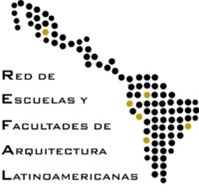Landscape architectures in the south pacific desert between undoing and not doing
A project photographic review from the redistribution of the nature concept in the theory of "untouchable soil and removable ecological work", as new infrastructures for the Atacama desert
DOI:
https://doi.org/10.47796/ra.2020i18.442Keywords:
Landscape architecture, untouchable soil, ecological workAbstract
The disconnection of architecture with the natural soil in an arid landscape and its possibility of freeing it from it in a series of works that were projected to be disassembled at some future time, this when the work reaches its useful life, in addition to the use of materials Biodegradable in their constitution, they are a foundational part of this landscape.
The enhancement of permanent traditional construction techniques in desert settlements, among others the “Quincha” type construction system (reeds, wood, straw, earth), also projecting all its paths in bischofita (compacted salt), the use of walls of blocks of white salt worked from the salt flats of the Atacama desert, all these materials without major industrial or technological processes, but rather as raw material of the place for artisan work, approaching a tectonic revaluation in architecture and its reaction to the industrial from a vision of crafts and fine arts in the trade and technical and traditional work.









